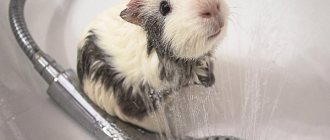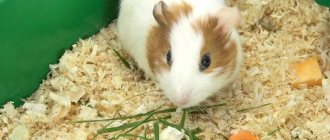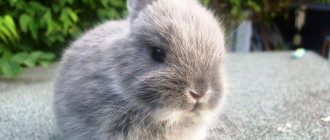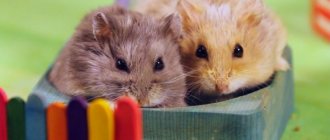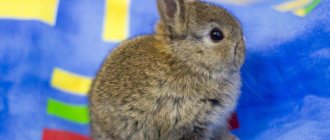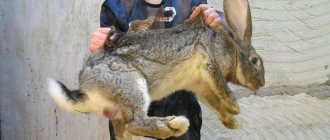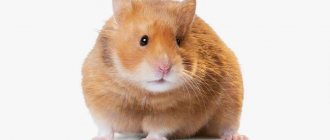Increasingly, guinea pigs are kept at home. However, many novice owners do not know that there are many nuances in caring for cavy. Take the fact that a rodent can die if it doesn't eat for at least one day. Therefore, it is better to find out in advance what it is, what it eats, what living conditions are necessary and how to properly care for such an animal.
Basic rules for caring for kevi
The guinea pig is quite unpretentious in care and maintenance at home. To keep your animal healthy and active, the following rules must be followed:
- feed 2-3 times a day;
- Clean the cage or terrarium weekly;
- change litter every 72 hours;
- clean the feeder every day and remove excrement (you can teach the animal to relieve itself in a plastic container with low sides, which is washed once a day);
- combing the fur either once every 3 days or every other day;
- Trim your guinea pig's claws once a year;
- file the incisors if necessary;
- deworm the animal, since most parasitic diseases are asymptomatic and only after an autopsy it is possible to find out why the pet died.
It is also worth examining the animal every 3 days to identify health problems. The following signs may indicate that a rodent is sick:
- red, purulent and watery eyes;
- nasal discharge;
- lethargy, physical inactivity, indifference to what is happening, drooping eyelids;
- stomach upset;
- cough;
- breathing problems;
- refusal to eat, constant thirst;
- shiver;
- convulsions;
- enlarged lymph nodes.
If these symptoms appear, you should take the animal to the veterinarian as soon as possible. The specialist will conduct the necessary examination and prescribe adequate therapy. You should not try to diagnose a rodent yourself. After all, different diseases can have the same symptoms, since, for example, difficulty breathing can indicate both that the pet has a cold and that it has lung cancer. If the tumor is detected at an early stage, it can be removed. When a tumor in a guinea pig is discovered too late and it has destroyed the lung tissue, treatment is useless. That is why, if health problems arise, you should not put off visiting a veterinarian.
You should also let your guinea pig out for a walk around the apartment every day. It is important to monitor the animal so that it does not get injured. While walking around the apartment, a rodent can damage furniture or chew through wires. Caring for guinea pigs does not involve walking outside. But if the owners are going to walk with the rodent, they should buy a harness so that the animal does not run away.
How much space does a guinea pig take up: cage arrangement
If you want to get a pig because there is not enough space in your apartment for a cat or dog, give up this idea. A guinea pig takes up more space than the largest cat and makes more noise.
You cannot keep a pig in:
- Aquarium/terrarium;
- Closed cage "dune";
- Hamster cage;
- Multi-tiered high cage for birds, chinchillas, rats.
The ideal option is an enclosure, but it is rarely built in an apartment. The cage should be one-story, 120-150 cm in length to accommodate 2-3 animals. The bigger the better, but even a spacious cage does not satisfy the need for movement, and rodents need to be allowed out of the cage for a walk (6 hours a day).
It may seem that a large cage requires a lot of filler, but in fact this is not the case: you will have to change the bedding less often than in a small cage. Bedding options:
- Paper filler;
- Wood or corn pellets combined with sawdust;
- Sawdust.
The filler should be applied in a thick layer (5 cm), changing as it gets dirty. Under it, on the bottom, you can lay an absorbent diaper. Abroad, fleece fabric is often placed on top of the filling. Fleece allows urine to flow downwards, drying instantly, and solid feces are easy to clean up. This type of bedding needs to be washed regularly.
You cannot keep your pig on a wire rack so that the excrement falls down. The grill damages the paws, causing pododermatitis.
Tunnels, houses, bridges made of ceramics or wood are placed in the cage. There are special toys for pigs - pipes made of hay, wicker balls made of straw. You can hang fabric hammocks or set up beds, but they will have to be washed often.
Prohibited:
- wheel (any size);
- walking ball;
- plastic things.
Feeding
Before getting a rodent, you need to find out what guinea pigs eat, as some foods can cause irreparable harm to the animal’s health.
It should be remembered that kewi are herbivores. They should not be given dairy, meat, sweet, very spicy or over-salted foods.
The basis of their diet is cereals, fresh vegetables, fruits, herbs, and hay. But we must remember that not all herbs can be eaten by rodents; many of them are poisonous to the animal.
You can give your pig beets, carrots, clover, and yarrow. You should ask your veterinarian for more information about permitted and prohibited foods and herbs.
Natural food alone is not enough for your pet to grow up healthy. It is important to provide your guinea pig with additional ascorbic acid at home. The daily norm for her is 20 mg. Vitamin C should be given at a rate of 1 mg per 1 ml of water.
It is forbidden to give the animal damp and dirty food, rotten fruits and vegetables. To make a rodent's fur shine, it needs to be given sunflower and flax seeds.
Proper care and maintenance of a guinea pig also includes compliance with the feeding regime. The animal needs to be given food in the morning and evening, but if the female is expecting offspring, it should be fed 4 times a day.
You should not be alarmed if a rodent starts eating its own feces - this is normal.
Organization of space
Buying a pet is half the battle; you also need to take care of its habitat at home and additional accessories that will make the animal’s life comfortable and fulfilling. What should you buy for your guinea pig?
- Cage or terrarium. The sizes are selected based on the number of future residents. There should be at least 0.2 square meters per rodent. m of usable area (approximately 50 cm * 50 cm). Accordingly, the more animals are kept, the more spacious the home should be. The cage is chosen only with a plastic tray. Wooden “floors” tend to absorb urine, and over time an unpleasant odor will appear, which will be difficult to get rid of.
- The guinea pig should be kept on bedding. As such they use:
- Wood chips are the preferred option.
- Wood pellets are good at retaining unpleasant odors. But when using them, two big disadvantages arise. First: the granules are quite hard and over time the animals will develop calluses on their paws. The second disadvantage: when wet, this type of litter crumbles into a small fraction, which enters the respiratory tract and causes problems with the pulmonary system.
- Napkins, paper towels, toilet paper (but never newspaper).
- Disposable diapers.
- Fleece bedding (most popular abroad).
- Special cellulose filler.
- You should not use straw as bedding. Firstly, babies can eat it, which will inevitably cause digestive problems, and secondly, it rots, mold fungi multiply in it, which is fraught with the appearance of mycoses.
- A drinking bowl and two feeders (one for grain feed, the other for vegetables and fruits). It is best to screw dishes to the bottom or sides of the cage, as overly mobile rodents can turn them over, creating additional chaos.
- A small branch of a fruit tree. It is necessary so that the guinea pig can sharpen its teeth.
- If the size of the cage allows, then you can additionally install a house in which many animals will happily sleep or relax.
- Toys. When choosing them, do not forget about safety - some accessories may be toxic or contain small parts or sharp corners, which can lead to injury or intestinal blockage if accidentally swallowed. Many toys quickly become boring, so they are changed periodically to prevent rodents from getting bored. Suitable: cardboard boxes with holes,
- cardboard tubes in which you can hide hay,
- wicker baskets, plastic containers,
- tunnels made of large diameter plastic plumbing pipes,
- plastic rustling bags,
- lumps of paper,
- shreds filled with sawdust,
- tennis balls,
- conifer cones,
- wooden cubes without varnish or paint,
- plush toys, it is advisable to replace the filler with sawdust.
Water treatments
The rodent does not like to bathe, so you only need to wash it if the animal gets dirty. You can’t wet your pig’s head; when you can’t do without shampoo, you should use either baby shampoo or a special shampoo for kevi, which needs to be completely rinsed off. The optimal temperature for swimming is 38 degrees. A lower temperature can cause hypothermia and the animal will get sick. Water that is too hot can burn the animal.
The anal sac should be washed especially thoroughly. To do this, lightly press on the pet’s stomach and remove the feces using a cotton swab.
In males, the foreskin is washed, as a large amount of dirt can accumulate here.
After the rodent is removed from the water, it must be dried with a towel. If the pet is a long-haired breed, then you can use a hairdryer, of course, when the animal is not frightened by its noise.
Tips for choosing a leash
There are several types of leashes for rodents:
- harness-vest;
- figure eight harness;
- harness
The most convenient device for a rodent is a vest. Such a leash is difficult to find even on the Internet, but you can sew it yourself. Other leashes are more affordable, but the straps may cause discomfort for your pet. To make sure that your pet is comfortable, just check the gap between the belt and the neck. One finger should fit into this gap.
Under no circumstances should you put a collar on your pig. The neck of rodents is a weak and vulnerable place. It can be tightened too tightly and damage the neck, or, conversely, it can be left loose and the animal will slip out.
Fur care
Short-haired kewis care for their fur independently using their teeth. However, it would be a good idea to comb them; the animal should especially be combed during the molting period, which usually occurs in spring and autumn.
This must be done 2 times a week.
Caring for a long-haired guinea pig involves regular brushing. This is necessary to prevent the fur from becoming tangled. When it does become matted, it needs to be cut.
Caring for an Angora pig is especially troublesome. The length of her coat reaches 20 cm and needs to be brushed 2-3 times a week. For this purpose, you should purchase a brush and a special comb. If you carry out this procedure regularly, the fur will shine. In summer, the animal can be trimmed. A rodent should be taught to scratch itself from an early age. Before the procedure, the fur should be moistened. In this case, he will twitch less. You need to sit the rodent on your lap and untangle the fur with a comb, and then go over it with a soft brush.
Summary: whether or not to get a guinea pig
Guinea pigs make wonderful pets. It's a pleasure to watch them. But you shouldn’t have them if:
- You are not ready to adopt two or more pigs at once;
- Get a guinea pig instead of a cat or dog;
- Are you going to keep the animal in a tight cage?
- Spend little time at home.
Guinea pig: keeping and caring for is a troublesome task; many people believe that caring for a cat is much easier. To prevent things from happening, as in the well-known saying “the woman had no worries, the woman bought a piglet,” assess your capabilities in advance.
If you provide a pig company with decent living conditions, the animals will delight you for many years with their cheerfulness, interesting habits and good health. Write in the comments about your pets!
If this article was helpful, please support the author HERE. You can also purchase a fictional story about the work of veterinarians “Dachshund of Fate” using the link.
Nail care
At home, the rodent does not have the opportunity to grind down its claws, so the owners must trim them. If this is not done, the claw may dig into the pad and injure it. Long nails also make it difficult for the animal to move.
Before you begin the procedure, watch a video on the Internet on how to trim a guinea pig’s claws, and only then trim them. Since this stage of caring for an animal requires certain knowledge and skills.
A rodent's claws contain nerve endings and blood vessels; cutting them too short can cause pain to the animal. A bleeding wound may not heal for a long time; pathogenic microflora may enter it and develop an infection.
You need to start cutting claws when the animal is 12 months old. This should be done 1-2 times a year. One person should hold the animal, and the second should trim the overgrown nails. It is advisable to illuminate the claw from below with a flashlight so that you can see how to cut it short.
If a blood vessel has been damaged, then it is necessary to stop the bleeding as quickly as possible; hydrogen peroxide is used for this purpose. After which the paw is bandaged. If there is no peroxide, then you can sprinkle flour on the wound, it will quickly clot the blood.
To reduce the likelihood of infection, you should immediately clean the cage.
You can buy a nail clipper and manicure scissors at pet supplies.
You can also shorten the claws at the veterinary clinic.
Pet's life: alone or in pairs
Animals belong to the category of social animals, because in natural conditions they live in packs of 5-10 individuals. If you get one pet, you need to provide it with close contact with people:
- often pick up and stroke;
- place the cage in the room where the apartment residents spend most of their free time;
- systematically approach the pig and stroke it.
Living in a pair is much more pleasant for a guinea pig than living alone - there is someone to frolic with if there is enough cage space. Therefore, animals that live in the company of fellow tribesmen are healthier: during movement, adipose tissue is absorbed and muscles are strengthened.
Dental care
Kevy's front incisors grow throughout their lives. In the wild, rodents constantly wear them down. At home, for this purpose, you can give the animal something solid, for example, tree branches. It must be remembered that not all trees are safe for rodents; some are poisonous to them.
If an animal's teeth are too long, they can injure the animal and cause the rodent to die of starvation.
To avoid this, you need to visit the veterinarian once every 3 months to have the incisors filed.
How to feed?
The diet should be as varied as possible, fully meet the need for nutrients, and contain a sufficient amount of vitamins and minerals. The diet mainly consists of grain mixtures, vegetables and fruits. Feed 2 times a day.
As a grain component, it is easiest to use ready-made granulated feed, which already contains all the necessary substances. Typically, micro-, macroelements and vitamins are additionally added to commercial premixes, which is very convenient and greatly simplifies the life of the owners.
The diet must include greens and, if possible, fresh grass (in winter it is replaced with hay). Also additionally used are seeds, root vegetables (potatoes, carrots, beets), cabbage, tomatoes, dandelions, lettuce, apples.
If for some reason you have to compose the diet yourself, then special attention is paid to the percentage composition: 15% should be coarse fiber, 20% vegetable proteins, 4% vegetable fats.
Vitamin C is very important for rodents; it is given along with water: an approximate dose of 1 mg per day. By the way, clean drinking water should be freely available and should be changed at least twice a day.
Eye care
The rodent's eyes should be examined every day. They must be clean without any discharge. This indicates that the animal is healthy.
If the eyes are swollen or red, then it is important to identify what provoked such a deviation from the norm. It may be worth moving the animal's cage to a more protected place, since the pig does not like drafts. If the redness and swelling do not go away, and even more so if pus appears, you should seek veterinary help as soon as possible.
Conditions of detention
Cavie likes to be the center of attention, so the cage should be placed in the area of the house where the owners are most often. A pig cannot live alone; it must be in contact with a relative. It is strictly forbidden to keep an animal in the yard or garage. On the street, the animal will catch a cold, and in the garage it can be poisoned by volatile chemicals and die.
The cage should be periodically placed on the windowsill or, in the warm season of the year, taken out to the balcony so that the pet can sunbathe. To prevent the cage from falling from the windowsill, it must be securely fixed.
Microclimate
Overheating and hypothermia are the same and are harmful to animals. It is worth noting that it is more difficult for a rodent to tolerate heat, but if the temperature in the room is too low, the pig may get sick. Therefore, you should not keep the cage near the front door or open window. The optimal temperature for keeping a pet is considered to be 16-20 degrees.
The air humidity in the room where the animal is kept should be in the range of 50-60%. Too dry air can cause cracks in the animal's skin, and too humid air can cause a fungal infection.
Kewis are diurnal, so lighting is important for them. But rodents should be protected from exposure to direct UV rays of the sun.
As you can see, keeping a guinea pig is not difficult even for beginners. A guinea pig, the care and maintenance of which at home will not cause you much trouble, will delight all members of your family.
The history of the appearance of the rodent breed
Representatives of South American tribes began breeding wild guinea pigs. These individuals were not like modern individuals with fluffy fur. After the discovery of America by Columbus, representatives of these rodents began to be brought to Europe.
Peru is considered the birthplace of sea pets. In ancient times, they were found in almost every home, but they were eaten and not kept as pets. Wild representatives of the breed had a dark color - black or brown.
They ran in flocks across the fields, hiding in dense bushes when danger arose. Rodents were bred for food.
Domesticated small rodents were called marine not because of their great love for sea fun and water procedures, but simply because they were brought from sea voyages. Cute and funny individuals were brought mainly from America and, due to the fact that they make a squeak, similar to a grunt, they were called pigs. They are capable of making different sounds, especially if they are very frightened.
